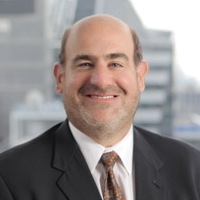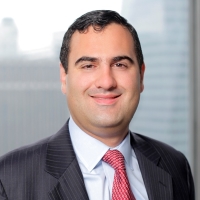November 16, 2015
Everyone makes mistakes … even lawyers! Most of the time we don't even know it because the error is either minor or doesn't affect the outcome. In this article, we discuss a small error by an attorney that could cost his client $1.5 billion. That's billion with a "B".
During 2008, GM planned to repay the first loan and directed its counsel to prepare a form termination statement releasing Chase's lien on GM's property. The form used to terminate the security interest (commonly referred to as a "UCC-3") is straight forward so a paralegal prepared the UCC-3 for the first loan. Unfortunately, the paralegal also mistakenly prepared a UCC-3 releasing the security on the $1.5 billion second loan. No one picked up the mistake: not the business people from GM or Chase or their lawyers. An attorney from Chase even responded stating "Nice job on the documents."
The termination statement for the $1.5 billion loan was filed and soon after that GM filed for bankruptcy. The committee of creditors in GM's bankruptcy estate uncovered the mistake and sued to have the $1.5 billion loan declared as unsecured (resulting in Chase receiving payment in "little bankruptcy dollars" with other general creditors, instead of off the top, like other secured creditors).
The bankruptcy court granted judgment in favor of Chase and against the creditors' committee, holding that Chase did not "authorize" filing of the erroneous termination statement within the meaning of the law because the record established that Chase "intended to grant, and granted, authority to GM to terminate [the first loan] only…. [and] . . . . [a]s importantly . . . this was GM's belief as well."[1] Put simply, the bankruptcy court concluded that because the parties' only intended to terminate the security interest in the first loan, Chase did not authorize termination of the financing statement relating to the second loan.
In response to the position that the consequences of UCC filings are, as one court described them, "dramatic and final," the bankruptcy court commented that the matter could not be viewed in "such simplistic terms." Under the bankruptcy court's interpretation of the law, Chase would not face any real consequences for its mistake. The bankruptcy court certified its judgment for direct appeal to the Second Circuit Court of Appeals (bankruptcy decisions are ordinarily appealed to the district court).
The appeals court said that there were two questions that needed to be answered to decide the issue. First, is it enough that Chase reviewed and knowingly approved for filing a termination statement extinguishing the perfected security interest in the second loan, or must the secured lender intend to terminate the particular security interest that is listed on the form? [2] The second question was whether Chase granted counsel for GM the authority to either terminate the second loan or to file the termination statement for the second loan that identified that interest for termination. The answer to the first question would necessarily answer the second.
The appeals court asked the Delaware Supreme Court to answer the first question (it was a question of Delaware law).The Delaware court responded by taking a simple approach: It held that for the filing of the termination statement on the second loan to be effective, all that is required is that Chase authorize its filing, not that it understand the terms in, or effect of, its filing.[3] The Delaware court was not as sensitive to the plight of Chase as was the bankruptcy court. Once the Delaware Supreme Court made its decision, the final outcome was clear: the appeals court reversed the bankruptcy court's determination that Chase had not authorized the filing of the erroneous termination statement noting that "it is clear that although JPMorgan never intended to terminate the Main Term Loan UCC-1, it authorized the filing of a UCC-3 termination statement that had the effect."[4] Chase's loan was now unsecured.
Clients sometimes criticize their counsel for "overlawyering" or providing services to guard against circumstances that may never occur, all of which add to the cost of a transaction. The events described above should serve as a cautionary tale to both clients and attorneys of the consequences of taking short-cuts. Let's be careful out there!
About the Authors:
 |
Eric Snyder is a Partner at Wilk Auslander, who has focused his practice around complex commercial creditor-debtor/landlord-tenant relationships for 25 years. He provides bankruptcy advice to corporations, landlords, creditors' committees, and bankruptcy trustees. Eric can be reached at: 212-981-2328 or via email at: esnyder@wilkauslander.com. |
 |
Eloy A. Peral is an Associate at Wilk Auslander, and works with trustees, creditors, creditors' committees, and debtors in a wide range of complex bankruptcy cases throughout the U.S. Eloy may be reached at: 212-981-2316 or via email at: eperal@wilkauslander.com. |
[1] Official Comm. of Unsecured Creditors of Motors Liquidation Co. v. JPMorgan Chase Bank, N.A.(In re Motors Liquidation Co.), 486 B.R. 596 (Bankr. S.D.N.Y. 2013).
[2] Official Comm. of Unsecured Creditors of Motors Liquidation Co. v. JPMorgan Chase Bank, N.A.(In re Motors Liquidation Co.), 755 F.3d 78, 86 (2d Cir. 2014).
[3] Official Comm. of Unsecured Creditors of Motors Liquidation Co. v. JPMorgan Chase Bank, N.A., 103 A.3d 1010 (Del. 2014).
[4] Official Comm. of Unsecured Creditors of Motors Liquidation Co. v. JPMorgan Chase Bank, N.A. (In re Motors Liquidation Co.), 777 F.3d 100 (2d Cir. 2015).
